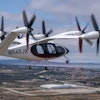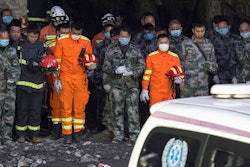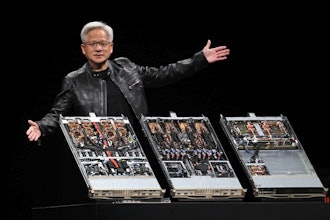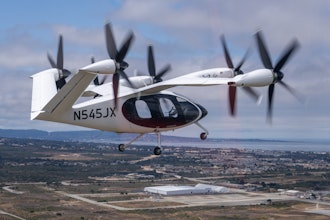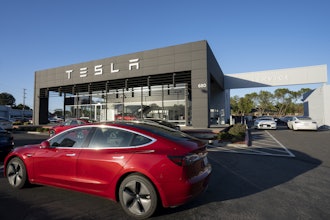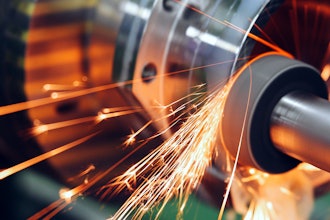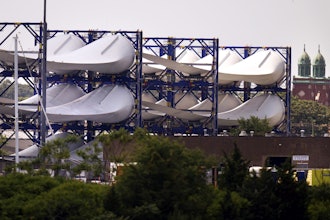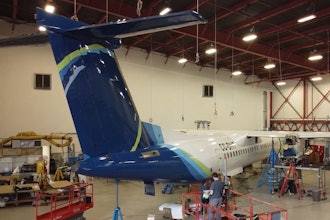Beastcam Captures Nature
Duncan Irschick is the creator behind the Beastcam Array, a rapid-capture, field-portable tabletop system for making high-resolution, full-color 3D models of living organisms. Now, scientists at the University of Massachusetts Amherst want to use to create 3D models of all living organisms.
The Beastcam was initially inspired by a trip that Irshick took to Florida to try and construct a 3D model of a living shark using a single camera system and failed miserably. Really, he called the model atrocious.
The Beastcam Array has 10 fixed arms that can hold up to three G-16 Canon cameras for a 30-camera array. You place the animal in the middle, snap a pic, and it is quickly turned into a 3D model by the cameras’ software. Really, it's pretty similar to those photo booths that turn you into a CAD file so you can print yourself.
Researchers call the new multimedia platform "Digital Life," and they have already created 3D models of sharks, scorpions, toads and lizards.
Next, they plan to use the Beastcam Array, to create 3D models of frogs and sea turtles, and the plan is to give all of this information away for free.
Metal Scraps Power Future Battery Design
Inspired by the Baghdad Battery, a team of researchers from Vanderbilt University has been dumpster diving to create high-performance batteries; and they do it with little more than a jar of a household chemical and a few metal scraps.
Using scraps of steel and brass, the team has created the world's first steel-brass battery that stores energy like a lead-acid battery and charges at rates comparable to supercapacitors.
In a new paper, the team says that the secret is anodization. When scraps of steel and brass are anodized, the metal surfaces are restructured into nanometer-sized networks of metal oxide that can store and release energy when reacting with water electrolytes that contain potassium hydroxide, an inexpensive salt used in laundry detergent.
They tested it for 5,000 consecutive charging cycles, which works out to be more than 13 years of daily charging and discharging, and it retained more than 90 percent of its capacity.
The team's next step is to build a full-scale prototype that could be used in energy-efficient smart homes, and the team is particularly excited about how this breakthrough could change the way batteries are made in the future, and give the new maker culture one more tool that they could use to disconnect from the grid and produce their own batteries.
Uber Wants to Build a Network of Air Taxis
Last week, Uber Elevate came out with a 97-page report on on-demand aviation and how it could radically improve urban mobility by building the infrastructure to support an urban VTOL network.
Uber details how a network of small, electric VTOL aircraft, which stands for vertical take-off and landing, could have significant cost advantages over heavy-infrastructure projects, like roads, rail, bridges, and tunnels. Think Uber, but instead of taking the streets, you're flying the friendly skies, which could soon be a bit more crowded with air taxis and drones making deliveries.
But what would they look like? According to the white paper, a number of companies are developing early VTOL prototypes, but in order to fit Uber's vision, the design will need to address four primary barriers: safety, noise, emissions and vehicle performance. And the two most important technologies to overcome these challenges are Distributed Electric Propulsion (DEP) and autonomous operation technologies.
Now, a few manufacturers are doing it right, right now. Uber calls out Zee.Aero as the largest company with a focus on advancing required component technologies, like electric motors, motor controllers, batteries and quiet propulsors.
Joby Aviation, Airbus, and NASA have shown promising concepts as well, and in the paper Uber details plans for vehicle designs, emissions, rider experience, and even notes the importance of getting governments, regulators, and you and me to buy into the air taxi.
Infrastructure is a concern, but the paper lays out the possibility of repurposing the tops of parking garages and existing helipads, and using undeveloped land surrounding highway interchanges as vertiports and vertistops.
The full report is available online, and New Atlas (that's the old Gizmag) has an excellent analysis as well.



